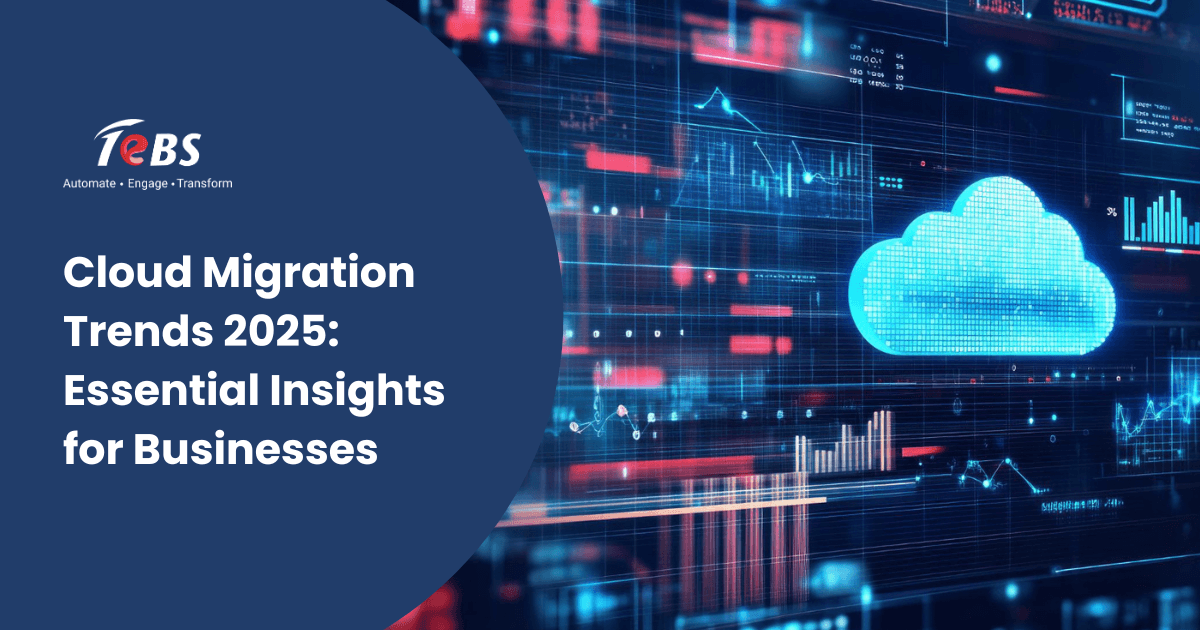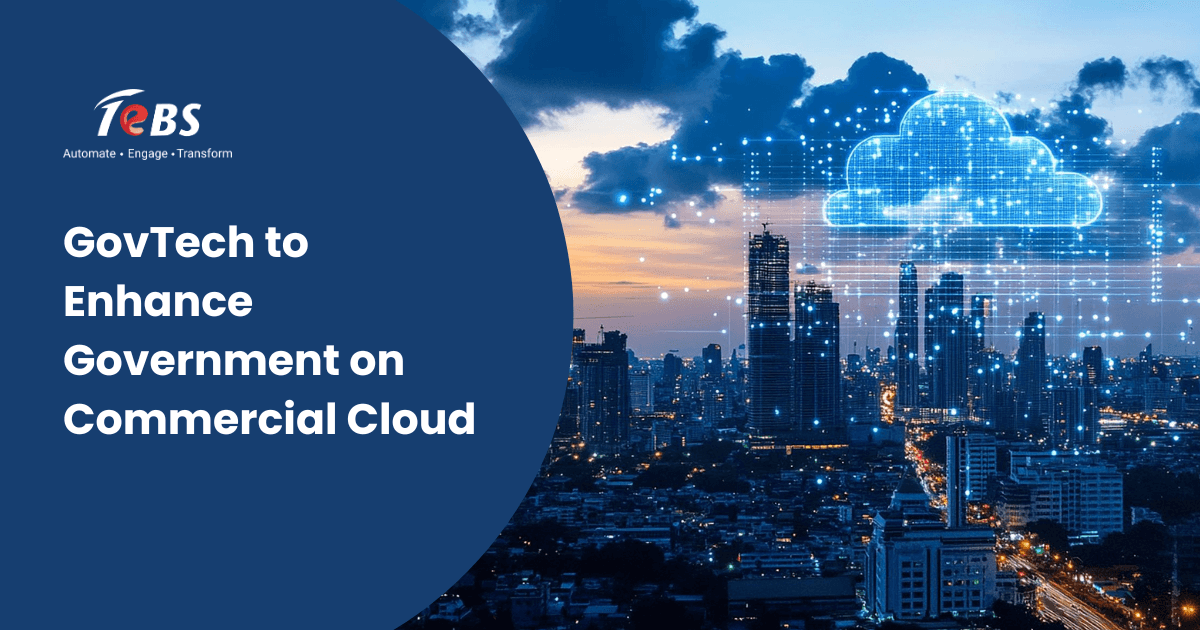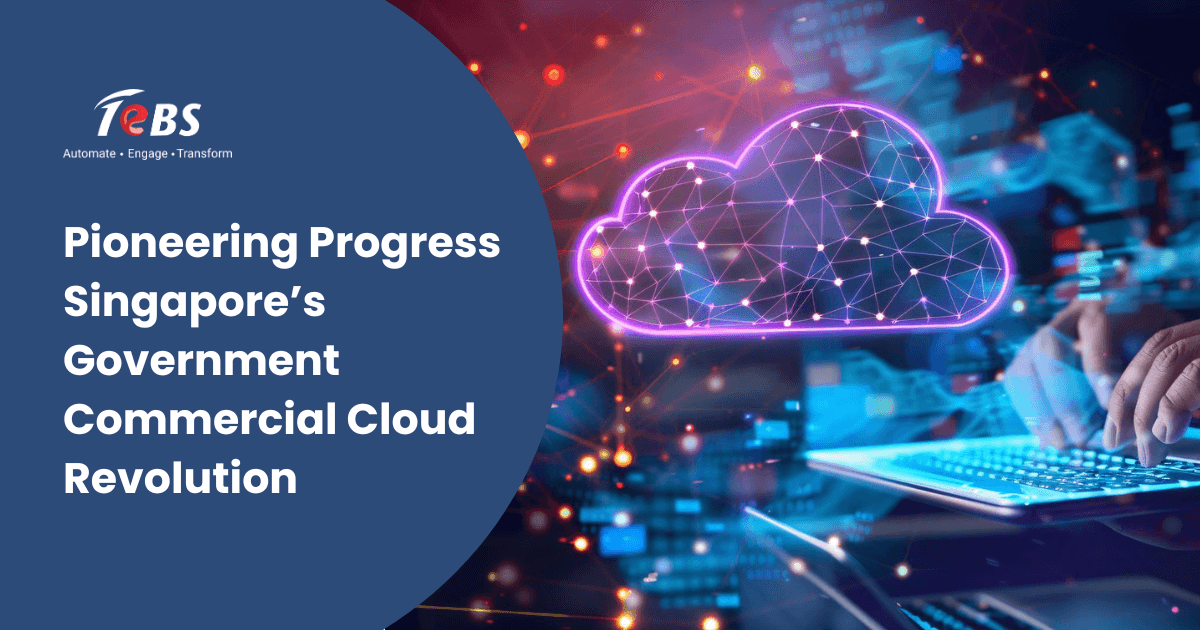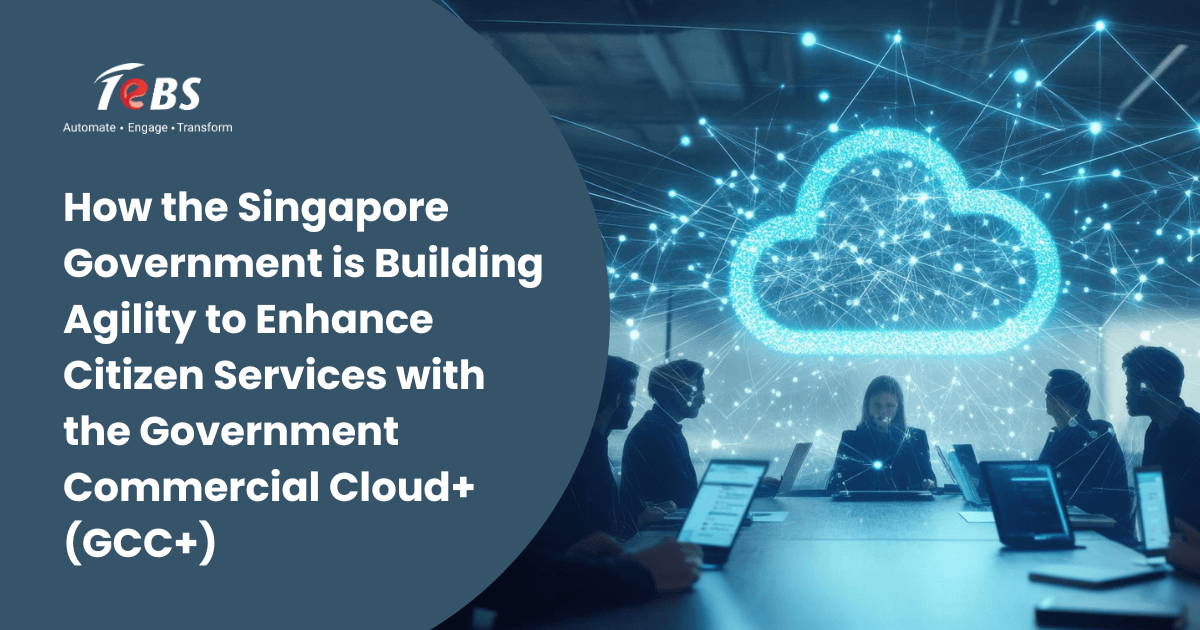Summary
Introduction: Cloud migration as a driver of digital transformation
Cloud migration has evolved from being an IT initiative to a central business strategy that drives innovation, agility, and growth. Organizations across industries are moving applications, data, and workloads to the cloud not just to reduce costs, but also to unlock new opportunities for automation, AI adoption, and customer experience transformation. With TeBS AI services, enterprises can embed intelligence into every stage of their cloud migration journey. By 2025, cloud migration is less about simply moving infrastructure and more about reimagining business models, enhancing operational efficiency, and ensuring scalability in an uncertain economic landscape.
As enterprises plan their next phase of transformation, understanding the latest cloud migration trends becomes crucial. These trends highlight how businesses are leveraging cloud to achieve competitive advantage, balance performance with costs, and navigate complex security and compliance requirements.
Trend 1: Hybrid and Multi-Cloud Adoption
One of the defining trends of 2025 is the accelerated adoption of hybrid and multi-cloud environments. Instead of relying solely on a single cloud provider, enterprises are increasingly distributing workloads across public, private, and hybrid environments.
Why this matters:
- A hybrid cloud provides the flexibility to run sensitive workloads in private environments while taking advantage of public cloud scalability for less sensitive tasks.
- Multi-cloud strategies allow enterprises to prevent vendor lock-in and ensure resilience by using best-of-breed services from different providers.
- Businesses can optimize costs by aligning workloads with the most cost-effective and performance-efficient cloud environment.
Enterprise example: A global manufacturing firm can store sensitive design data on a private cloud for security, while leveraging public cloud AI services for predictive maintenance analytics. This ensures compliance while driving operational efficiency.
By 2025, hybrid and multi-cloud adoption has become the norm rather than the exception. However, it also introduces complexities around integration, interoperability, and unified governance—requiring robust strategies and skilled partners to manage effectively. TeBS supports multi-cloud strategies through AI generative services and innovative integration, ensuring seamless interoperability across platforms.
Microsoft outlines hybrid and multi-cloud strategies in its Azure migration architecture guide, helping enterprises structure scalable adoption.
Trend 2: Cloud Cost Optimisation Becomes Priority
As cloud adoption matures, cost optimisation has emerged as a top priority for enterprises in 2025. While moving to the cloud initially promised cost savings, many organizations have experienced “cloud sprawl”—uncontrolled growth of services and rising operational costs.
TeBS’ AI Data Engineering services ensure high-quality, structured pipelines that optimise both cost and performance in cloud environments.
Key drivers of this trend:
- Economic pressures: With tighter budgets, CFOs and CIOs are focused on maximizing ROI from every cloud investment.
- Pay-as-you-go complexity: Cloud pricing models can quickly spiral if not monitored, especially when workloads scale dynamically.
- Sustainability goals: Reducing unnecessary cloud consumption also helps enterprises lower their carbon footprint.
Cost optimisation practices gaining momentum:
- Implementing FinOps (Financial Operations) frameworks for real-time cost visibility.
- Rightsizing workloads by eliminating underutilized resources.
- Leveraging automation to shut down idle services outside business hours.
- Adopting multi-cloud arbitrage—choosing the most cost-effective provider for each workload.
The shift toward cost-conscious cloud adoption ensures that enterprises don’t just migrate, but also sustain long-term value from their investments.
Trend 3: AI and Automation Driving Migration Success
AI and automation are playing a transformative role in cloud migration strategies in 2025. Traditional migration approaches often involved manual planning, resource allocation, and monitoring—leading to delays, errors, and high costs. AI-powered automation is now streamlining the entire lifecycle of migration, from assessment to ongoing optimization.
For example, TeBS helped a global logistics enterprise increase process runtime by 128% using RPA, demonstrating the value of intelligent automation during migration.
How AI and automation are changing the game:
- Migration assessment: AI tools can automatically analyze workloads, dependencies, and data flows to recommend optimal migration paths.
- Execution efficiency: Automated pipelines accelerate the rehosting, refactoring, or replatforming of applications.
- Ongoing optimization: AI continuously monitors workloads in the cloud, reallocating resources to ensure cost and performance efficiency.
- Predictive insights: Machine learning models anticipate potential downtime, compliance risks, or cost spikes before they occur.
Business impact: Enterprises can reduce migration timelines, minimize risks, and improve scalability with AI-driven processes. For example, a financial services company can use AI to detect unusual traffic patterns during migration and auto-adjust resources to prevent disruptions in customer transactions.
By embedding AI and automation into their cloud strategies, businesses are not only ensuring smoother migrations but also setting the stage for smarter cloud operations.
For a practical roadmap, read our guide on Achieving Seamless Cloud Migration with These 3 Essential Steps.
Trend 4: Security and Compliance in 2025
Security and compliance remain critical concerns for enterprises moving to the cloud, and by 2025, the stakes have grown even higher. The increase in cyberattacks, evolving regulatory requirements, and the complexity of managing multi-cloud environments demand a renewed focus on cloud security.Key developments shaping security in 2025:
- Zero Trust adoption: Enterprises are increasingly adopting Zero Trust models, ensuring that no user or device is trusted by default, even within internal networks.
- AI-driven threat detection: Cloud-native security solutions leverage AI to identify and mitigate threats in real time.
- Compliance automation: Tools now automatically enforce compliance policies across multiple cloud environments, reducing the burden on IT teams.
- Data sovereignty focus: With countries enforcing stricter data residency laws, enterprises must ensure that data is stored and processed in compliance with local regulations.
Enterprise example: A healthcare provider operating across regions must comply with HIPAA, GDPR, and local data privacy laws simultaneously. By leveraging compliance automation in the cloud, they can maintain security while ensuring global operations remain uninterrupted.
In 2025, cloud security is no longer just about protecting workloads—it’s about enabling trust, regulatory adherence, and business continuity.
Business Implications of Cloud Migration Trends
| Trend | Enterprise Benefit | Adoption Consideration |
| Hybrid and Multi-Cloud Adoption | Flexibility, reduced vendor lock-in, resilience, and cost optimization. | Requires strong governance, integration expertise, and unified visibility across platforms. |
| Cloud Cost Optimisation | Sustainable ROI, reduced waste, alignment with financial and sustainability goals. | Demands FinOps practices, workload rightsizing, and continuous monitoring. |
| AI and Automation | Faster migration timelines, reduced errors, predictive insights, and operational agility. | Needs investment in AI tools, skilled talent, and change management strategies. |
| Security and Compliance in 2025 | Enhanced trust, regulatory adherence, and improved risk management. | Must implement Zero Trust, compliance automation, and address data sovereignty challenges. |
Conclusion
Cloud migration in 2025 is no longer about a simple lift-and-shift approach. It represents a critical enabler of digital transformation, where enterprises embrace hybrid and multi-cloud flexibility, prioritize cost optimization, leverage AI and automation for smarter migrations, and strengthen security to build resilience and trust.
Businesses that align with these trends can achieve greater scalability, innovation, and competitive advantage in the digital economy. However, success requires the right mix of technology, governance, and expertise to balance opportunities with challenges.
According to Gartner’s Public Cloud Migration Strategies, enterprises must align governance and cost optimisation practices to realise long-term value.”
If your organization is planning or refining its cloud migration strategy, partnering with an experienced technology provider can make the difference between incremental improvement and true transformation. Reach out to our team at [email protected] to explore tailored cloud migration solutions that accelerate your business goals.
Frequently asked questions
What are the key cloud migration trends in 2025?
Hybrid and multi-cloud adoption, AI-driven migration, edge computing integration, and cloud-native modernization are leading trends.How can businesses optimise cloud costs effectively?
By right-sizing resources, leveraging reserved instances, monitoring usage continuously, and automating cost management.What role does AI and automation play in cloud migration?
AI and automation accelerate migration, reduce errors, optimize workloads, and improve performance.Why is compliance automation critical in cloud adoption?
It ensures regulatory adherence, reduces manual risk, and streamlines audits in complex cloud environments.What are the business implications of cloud migration trends?
Faster innovation, improved scalability, cost efficiency, enhanced security, and a competitive advantage in the market.





